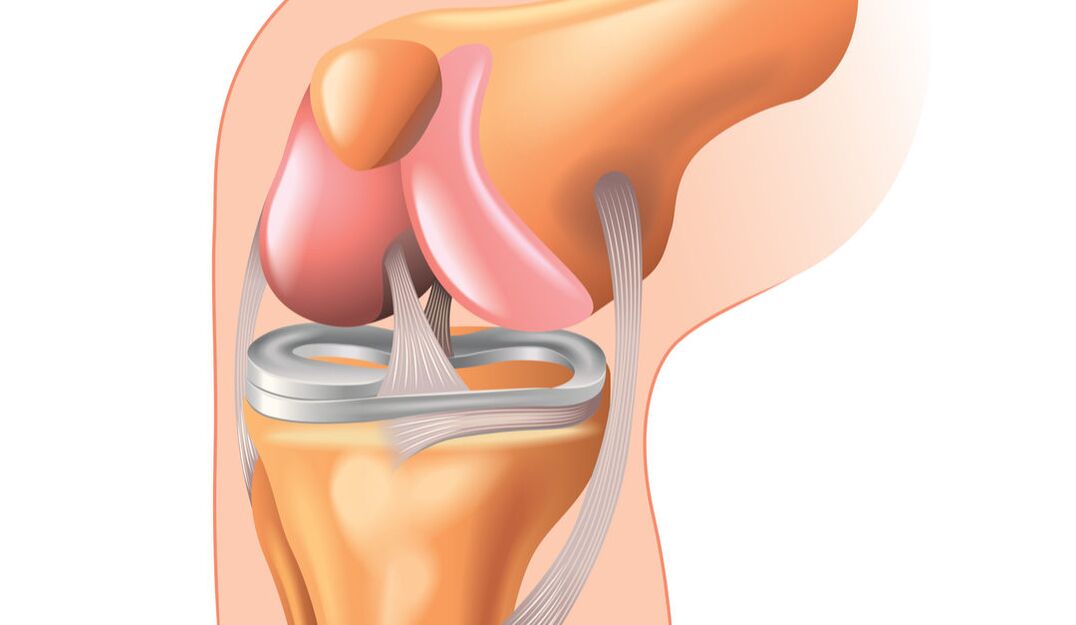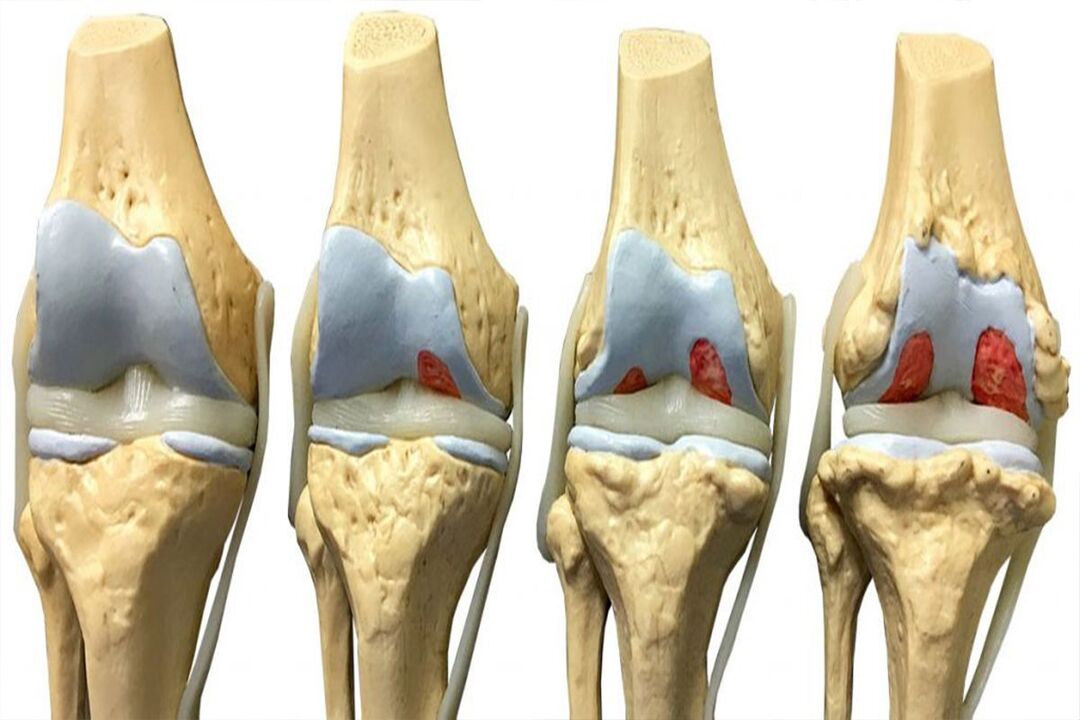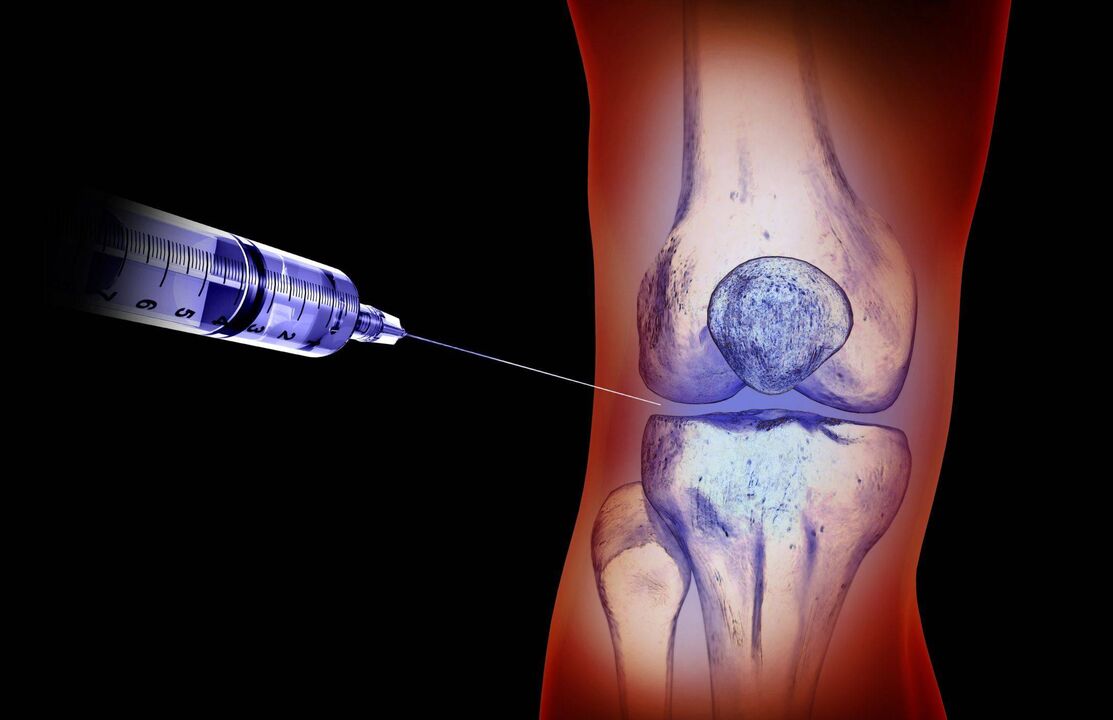The inflammatory and degenerative process in the knee joint, or gonarthrosis, occurs for a number of reasons. It has an extremely negative effect on a person's quality of life, sometimes leading to disability. How to treat arthritis in the knee joint and prevent complications?
What is arthritis?
About 22% of the world's population suffers from gonarthrosis, and women are more often affected. This harmful disease is characterized by rapid progression.

If treatment is not started in time, the knee joint can completely collapse. This leads to reduced musculoskeletal function. Movement is only possible with the help of crutches, or the person will be confined to a wheelchair.
The knee joint is the second largest, after the hip, and the most structurally complex. It allows you to bend and straighten your leg in different directions, promoting proper posture and coordination in space. This is a strong and stable joint that can withstand the weight of a person. Consists of 3 bones: femur, tibia and fibula, plus kneecap or patella. Contains osteochondral structure, muscles, ligaments and nerve fibers.
The disease begins with a violation of blood circulation and nutrition of joint tissues. First of all, the cartilage suffers. The quality and quantity of synovial fluid, which is located in the joint capsule and contributes to the smooth functioning of the knee, decreases. Friction occurs between the joints. Gradually the cartilage cracks and collapses. Exposed bones begin to rub against each other. Pain occurs and a crunching sound is heard.
Causes of the disease
It mainly affects older people, especially overweight women. Due to hormonal changes, the cartilage in the knee wears down a lot. Gonarthrosis to varying degrees, after 60 years, occurs in more than 80% of people.
There are other reasons for the appearance of arthritis in the knee:
- congenital joint diseases;
- dysplasia;
- injuries, procedures;
- removal of the meniscus or part thereof;
- arthritis;
- diseases of the lumbar spine;
- hormonal disorders;
- low metabolism.
The risk of getting the disease increases in people who do repetitive physical work. This group also includes athletes, sedentary people and people with unfavorable environmental conditions. Often patients are people addicted to toxins (drugs, alcohol, smoking).
The cause of joint deformity can be work related to constant hypothermia. The contributing factor is the period after menopause, when a woman develops gynecological diseases (fibroid, endometriosis, uterine fibroids). Due to the lack of minerals and vitamins in the body, diet can be the trigger.
Stages and symptoms
Gonarthrosis can be unilateral or bilateral. According to the nature of the symptoms, the disease is divided into degrees:
- At this stage, there are no obvious clinical symptoms. Minor discomfort and pain may be present after prolonged exercise which will disappear after rest. The pain is felt in the morning, when moving it disappears after some time. Grade 1 arthritis is rarely detected by chance during a routine examination.
- Pain and stiffness in the knee increases. You protect your foot and try to put less pressure on it. As a result, the muscles atrophy, the joint deforms, a fusion may be found, and the leg at the knee does not fully extend.
- The pain is constant. The leg does not straighten or bend and it is difficult for the person to walk. Partial or total loss of mobility. The cartilage is completely destroyed, the friction between the bones in the joint increases during the formation of bone cells.

In addition to pain in the 2nd and 3rd grades, a crunching sound is heard in the knee. Fluid and pieces of cartilage can accumulate in the joint capsule, leading to inflammation. In the late stage, the inflammatory process is evident, the knee joint is deformed.
Analysis
If you have knee pain, you can contact your local doctor who, if necessary, will refer you to an orthopedic, trauma, rheumatologist or endocrinologist.
To find out the causes and treatment of gonarthrosis, a comprehensive diagnosis is needed:
- general and biochemical blood test;
- rheumatism test;
- radiography;
- Ultrasound and MRI can detect the disease at an early stage;
- arthroscopy.
An X-ray makes it possible to see the condition of the cartilage and changes in the bones in stages 2 and 3. This is a narrowing of the joint space, osteoporosis along the edges of the patella, changes in the periosteum. Arthroscopy provides more detailed information about the meniscus, synovium and the presence of fluid. This procedure is also used in the treatment of the knee, to remove cartilage or meniscus.
Treatment of knee arthritis
The treatment is long and sometimes painful. After appearing once, the disease reminds you for the rest of your life. The main drugs used for treatment are non-steroidal anti-inflammatory drugs. These are most often drugs based on non-steroidal anti-inflammatory drugs (NSAIDs) from the group of phenylacetic acid derivatives. They eliminate inflammation and pain. Medicines are relatively cheap but lead to ulceration and erosion of the stomach and duodenum. Modern drugs cause fewer side effects but are expensive.

Treatment options for stage 1 include preventive measures related to exercise. It is necessary to exercise daily, use a shadow shower, swimming pool 2 times a week and fight against increased body weight.
Stage 2 requires immobilization of the joint - use of an elastic bandage, bandage or orthosis. To relieve pain, anti-inflammatory drugs are used in the form of creams and ointments. To reduce the destruction of cartilage, the patient is prescribed drugs from the group of chondroprotectors.
High severity requires oral anti-inflammatory drugs. Intra-articular injection of hormonal drugs is indicated - synthetic glucocorticoids (GCS), which have a high glucocorticoid and low mineralocortic activity. In addition, painkillers are prescribed.
A solution of hyaluronic acid is injected into the joint. It replaces synovial fluid and nourishes cartilage. During movement, it acts as a shock absorber for the joint. The treatment is painful, it is carried out by a doctor after the acute period has subsided. If conservative treatment is ineffective, artificial surgery is performed.
Along with medication, exercises with special simulators and devices (kinesitherapy) are prescribed. Ozone therapy has a positive effect on the condition of the knee. The substance is used externally, administered by subcutaneous or intramuscular injection, ozone-based ointment, cream. Treatment stimulates blood circulation, increases the effect of chondroprotectors and glucocorticoids.
Modern dietary supplements are in demand as an alternative to drugs for joint reconstruction. Exercise therapy and massage are suggested. A set of special exercises improves blood circulation and nutrition of cartilage cells, increases the elasticity of ligaments.
Complications and prevention
Destroyed cartilage tissue and deformed bones cannot be treated. In this situation, only surgery will help. No ointments or drugs can restore cartilage. Medicines can only stop the process of cartilage tissue destruction.
Gonarthrosis develops gradually, sometimes the disease lasts for many years. Without appropriate treatment, the patient's condition quickly worsens. The knee cannot function, serious complications occur:
- arthrosis;
- cosmetic defect - curvature of the limb;
- infection by blood or lymph flow from another source in the body;
- due to the weakness of the ligaments, dislocations and fractures are seen even during normal walking;
- bony fusion (invertebrate) occurs in the joint area, making movement impossible.
Complications arise if the patient does not see a doctor on time and the disease is advanced. Regular preventive examinations and timely treatment of general diseases of the body will help to prevent the condition from worsening and maintain the mobility of the limb.


























































































